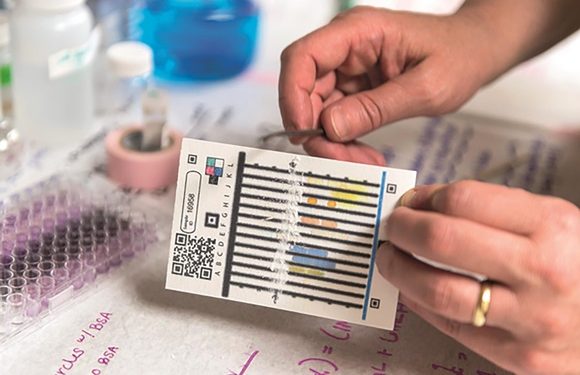Washington: Scientists have developed a paper-based test for antibiotics that turns a distinctive red colour on detecting fake or substandard drugs within minutes.
In the developing world, the manufacture and the distribution of substandard, non-legitimate medicines is widespread.
The World Health Organization (WHO) estimates that up to 10 per cent of all drugs worldwide could be falsified, with up to 50 per cent of those some form of antibiotics.
A counterfeit or diluted antibiotic can not only endanger an unwitting patient, but can also contribute to the wider problem of antimicrobial resistance.
Scientists from the Colorado State University in the US created a simple, inexpensive way to tackle the problem.
The researchers have created a paper-based test that can quickly determine whether an antibiotic sample is appropriate strength, or diluted with filler substances like baking soda.
Similar to the mechanism of a home pregnancy test, a strip of paper turns a distinctive colour if a falsified antibiotic is present.
“The goal of this project has been to make a cheap detection device that is easy to use; our device costs literally a quarter to make,” said Kat Boehle, a recently graduated PhD student.
Bacteria naturally produce an enzyme that can give them resistance to antibiotics by chemically binding to portions of the antibiotic molecule.
The researchers used this very enzyme, called beta-lactamase, to empower their device to detect the presence of antibiotics in a given sample.
For the test, the user dissolves the antibiotic in water, and adds the solution to a small paper device.
The paper contains a molecule called nitrocefin that changes colour when it reacts with the enzyme. In this setup, the antibiotic and the nitrocefin on the paper are in competition to bind with the enzyme in a detection zone.
With a good antibiotic dose, there is little colour change in the paper strip, because the antibiotic outcompetes the nitrocefin and successfully binds with the beta-lactamase enzyme.
However, in a falsified or weakened antibiotic, the paper goes red, because the enzyme instead reacts with the nitrocefin.
The device also includes a pH indicator, to determine if a sample is acidic or alkaline. This extra information could further alert the user to whether a sample has been falsified with filler ingredients, which might otherwise confound the main test.
It is fast and can be used by an untrained professional — all key goals of the project, researchers said.
Traditional approaches for testing drug purity rely on large, expensive analytical equipment in labs, including mass spectrometry, making it challenging or impossible for developing countries to access easily.
To ensure the usability of the device, the researchers included in their experiment a blind test with five users who were unfamiliar with the device or the science behind it.
They all successfully identified 29 out of 32 antibiotic samples as either legitimate or false.
PTI







































